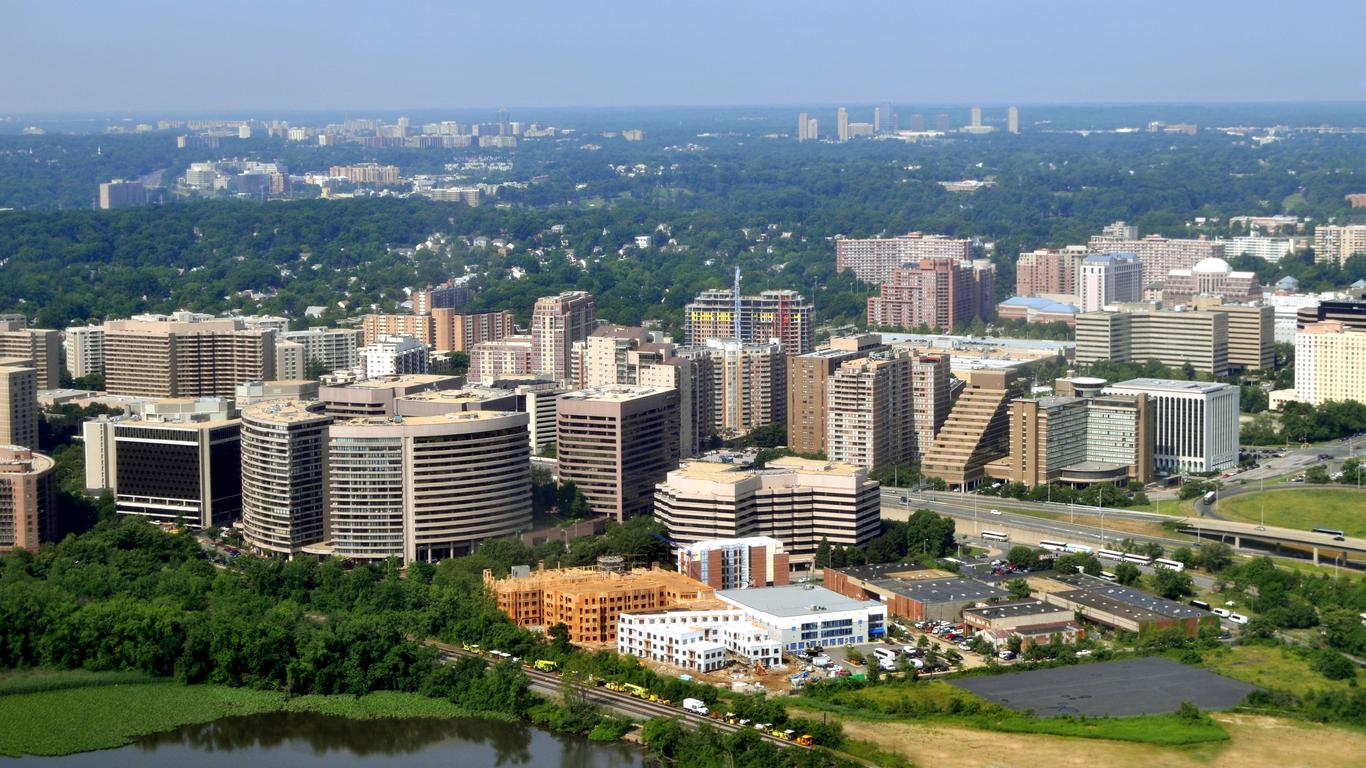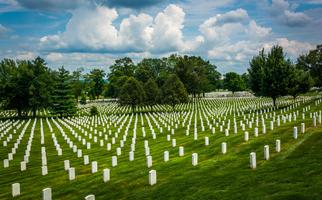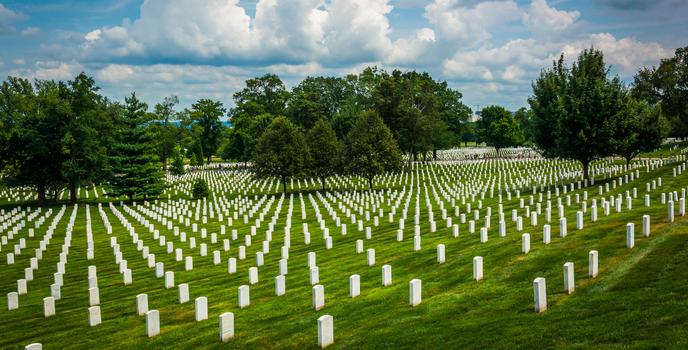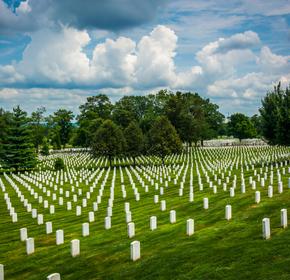1. Arlington National Cemetery: Tribute to America's Fallen
Set on 624 acres, the Arlington National Cemetery honors American fallen soldiers. Dating back to the Civil War, the cemetery was built on the estate of Arlington House, Robert E. Lee's family home. The landmark includes the Arlington National Cemetery Historic District, which contains the Hemicycle, Memorial Drive, and the Arlington Memorial Bridge. The area also includes the Arlington Memorial Amphitheater, which hosts Veterans Day and Memorial Day services, as well as funeral and memorial services. The most frequently visited sites at the cemetery include the graves of President John F. Kennedy, Jacqueline Kennedy Onassis, Senator Robert F. Kennedy, and Senator Edward M. Kennedy. Also buried at Arlington are the astronauts killed in the 1967 Apollo 1 Command Module fire flash Gus Grissom and Roger Chaffee, as well as Senator John Glenn, the first American to orbit Earth.
2. Iwo Jima Memorial: Homage to the Marine Corps
The United States Marine Corps War Memorial, also known as the Iwo Jima Memorial, was founded in 1954. The site is dedicated U.S. Marine Corps who have died in the line of duty since 1775. The design of the memorial is based on the 1945 photograph shot by AP war photographer Joe Rosenthal, who captured six Marines as they raised the flag on Mount Suribachi during the Battle of Iwo Jima in World War II. The memorial was created by sculptor Felix de Weldon and architect Horace W. Peaslee, who received funding for the landmark in 1947. The landmark, which features inscriptions commemorating all major Marine Corps battles, is cast in bronze and sits atop a black granite base from a quarry in Lönsboda, Sweden. In 1961, President Kennedy declared that the American flag would fly over the memorial in perpetuity.
3. National 9/11 Pentagon Memorial: Gone But Not Forgotten
Designed by Julie Beckman and Keith Kaseman, the National 9/11 Pentagon Memorial is an outdoor landmark that honors the 184 people who died in the Pentagon and aboard American Airlines Flight 77 during the September 11, 2001 terrorist attacks. Inaugurated on September 11, 2008, the memorial features benches placed over reflecting pools that face the Pentagon's southern façade and bear the names of the victims, as well as a wall along the edge of the landmark that grows from three inches and to seventy-one inches, the ages of the youngest and oldest victims of the terrorist attack.
4. National Air Force Memorial: Observing Integrity and Service
Dedicated in 2006, the National Air Force Memorial is a tribute to Air Force members that served in the United States military. Designed by architect James Ingo Freed, the memorial features three soaring spires that range from 201 feet to 270 feet. The landmark also includes two jet mist and black granite inscription walls that bear the names of Medal of Honor recipients, as well as inspirational quotes that represent the core values of the the Air Force.
5. Tomb of the Unknown Soldier: Honoring the Unnamed
Dedicated to unidentified fallen soldiers, this tomb contains the remains of an unknown World War I combatant that was awarded the Medal of Honor, the Victoria Cross, and several other international service awards, as well as other unknowns that have been awarded the Medal of Honor. The white marble sarcophagus is flat-faced with relief at the corners and neoclassical columns at the sides. Three Greek figures, which represent peace, victory, and valor, are etched into the eastern panel. Six wreaths, three on each side, symbolize the six major battles of World War I.
6. National Mall: Welcome to the United States
The National Mall is host to America's greatest museums, monuments, and memorials. The Washington Monument is the centerpiece, flanked by the Lincoln Memorial and the Capitol Building, home to U.S. Congress. This cultural stretch can satisfy all interests, and popular highlights include the stunning Vietnam War Memorial, and the National Gallery of Art, which carries a world-renowned collection.
7. White House: Presidential Grounds
Home to every American President for the past two centuries, the White House is one of the most famous buildings in the country. The house is viewed by countless tourists from the lush surrounding gardens every day. With secret service agents casually surrounding the property, a visit to this house is like walking into a dramatic film set.
8. Colonial Williamsburg: Turn Back the Hands of Time
Colonial Williamsburg is a captivating place with pleasant surprises. It offers you the opportunity to spend some personal time with America's brave ancestors. Take a look at the beautiful ancient buildings and wander around the rich, fertile gardens. Learn about America's incredible history and try out some amazing and fun historical games. It'll feel like you didn't miss a thing as the valiant men of war led this wealthy country to victory.





